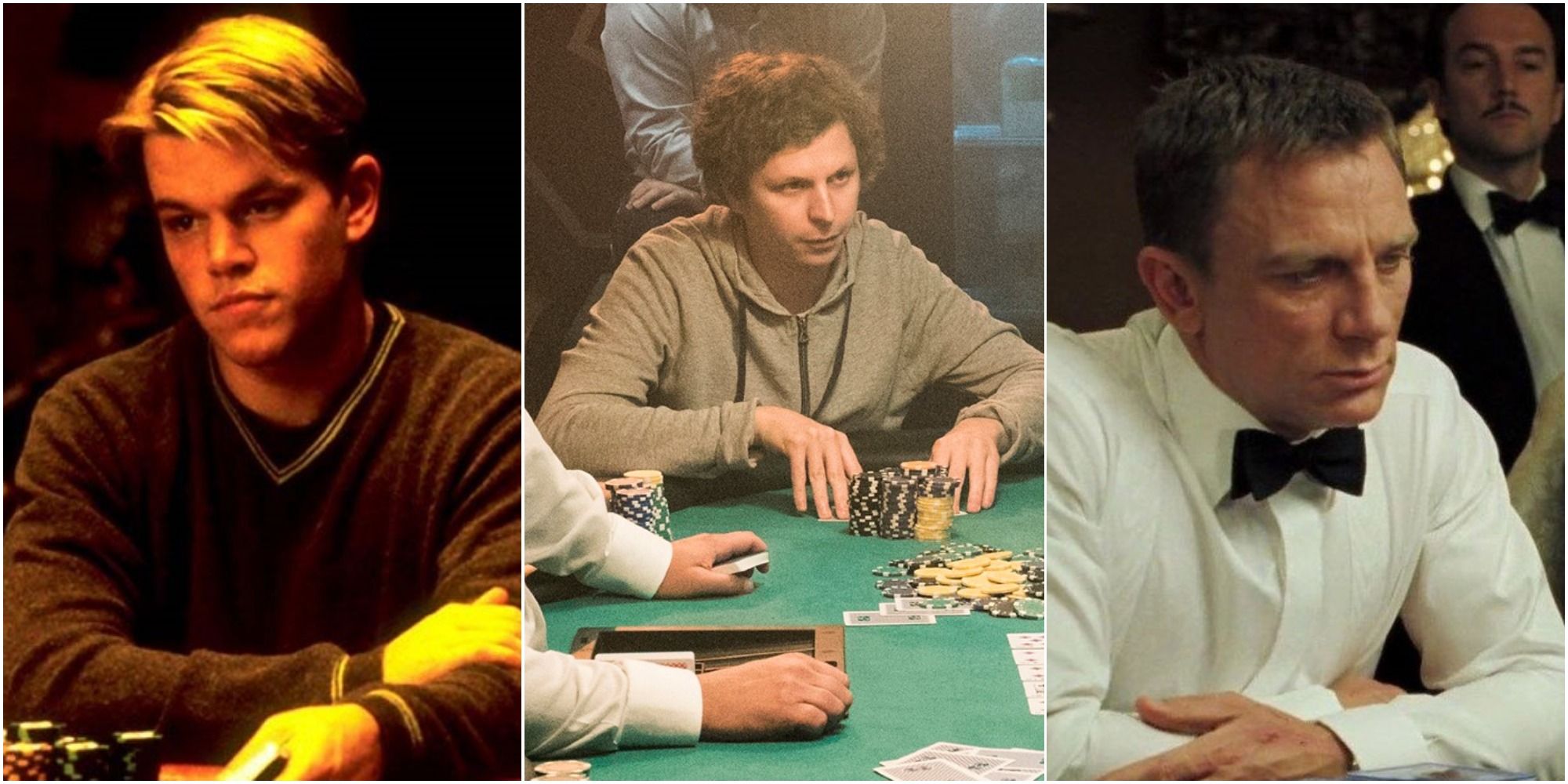Bluffing in poker-focused films frequently emphasizes psychological struggle over the value of the actual cards. Characters manipulate opponents into believing fabricated narratives about their hands. These moments exemplify the importance of interpreting non-verbal cues while maintaining emotional discipline.
Films such as Rounders highlight the stakes of this mind game. Mike McDermott’s ability to probe Teddy KGB’s demeanor for physical tells enhances the portrayal of bluffing as both an art and a science. Similarly, The Cincinnati Kid underscores the importance of reading opponents. It shows how a player’s ability to craft and exploit perception can outweigh the inherent strength of their cards.
Authenticity Versus Artistic License in Film Depictions
Poker-focused films often balance authenticity with creative storytelling when portraying the psychology of bluffing. For instance, some characters execute moves that bend plausibility, such as the elaborate slow plays or exaggerated reactions found in Rounders or Casino Royale. These dramatized moments may capture the essence of bluffing but follow cinematic goals over realism. In comparison, certain techniques, like maintaining a composed demeanor or misdirecting through speech, align closely with real-game strategies reflected in standard poker rules.
The core principles of bluffing—timing, perception manipulation, and emotional control—remain consistent. These films succeed in maintaining relatability among enthusiasts by pulling from realistic elements grounded in the rules of the game. However, they also enhance the theatrics of bluffing. Through this balance, such movies provide viewers with a depiction that feels both entertaining and rooted in the strategic nuances of the game.
Reading Beyond the Cards
Perception governs much of the bluffing dynamic in poker films. Successful bluffs hinge on manipulating opponents’ assumptions about a hand through behavioral cues. In Casino Royale, the subtle reveals of body language stand out. The film shows how physical movements and expressions are used to mislead opponents. This notion of control extends to players deliberately displaying misleading cues to trap others in folds or ill-advised calls, known as reverse tells.

Body language forms a core component of bluffing scenes. Players like Teddy KGB in Rounders personify how inadvertent physical gestures, such as the Oreo tell, can betray strategy. This underlies how observation frames on-screen bluffing effectiveness. Similarly, Maverick showcases how reading opponent expressions and adjusting strategy accordingly can dictate the outcome of high-stakes games. By leveraging an opponent’s hesitation or doubt, characters successfully execute well-timed bluffs that leave audiences in suspense.
Emotional Resilience at the Forefront
The tension between confidence and fear drives many bluffing moments in poker movie scenes. Projecting unwavering conviction, even with weak cards, amplifies the opponent’s hesitation to call. In The Cincinnati Kid, Eric Stoner embodies this composure. He utilizes a measured approach that contrasts with his counterpart’s visible discomfort, prompting misjudged folds. Such depictions of confidence highlight its centrality when attempting poker’s most calculated deception.
Films also explore the psychological cost of bluffing. Hesitation or excessive fear can undermine intended strategies. These missteps allow opponents to detect inconsistencies and render the bluff ineffective. Characters circumvent pitfalls often tied to mismanaged body language or erratic decisions by maintaining steady emotional control. Beyond just poker, these films subtly highlight the psychological warfare present in high-stakes gambling, emphasizing how maintaining composure can be the deciding factor between winning and losing.
Timing and Precision
The intricacies of bluffing timing receive considerable attention in titles like Rounders. Mike McDermott’s patient decision-making underscores how deliberate, context-aware bluffing creates believability. His approach demonstrates why preparation and flow matter more than repeated bluffs or aggressive tactics.
Different game conditions further define the opportunity for bluffing. In games like Texas Hold’em, communal cards and player volumes offer fertile grounds for misdirection, as shown when hands shift momentum after community cards exacerbate uncertainty. The need for strategic restraint surfaces when bluffing attempts become too frequent. Players who consistently bluff without control often become predictable, a concept that these films reinforce through their character-driven narratives.

Cinematic Tools Driving Suspense
Filmmakers extend the tension embedded in bluffing through various cinematic techniques. An example includes the slow roll in Casino Royale. Such practices diverge from authentic play by poker etiquette. Yet, their purpose in storytelling sharpens the inherent psychological standoffs.
Similarly, team-based bluffing receives a subtle portrayal in The Sting. The film illuminates how bluffs extend beyond solo acts by leveraging coordinated effort. It reshapes conceptions of how cooperation alters high-stakes poker outcomes. The dramatic use of camera angles, slow-motion sequences, and intense background music further amplifies the suspense surrounding major bluffs, allowing audiences to feel the high-pressure environment in real time.
Nuances of Behavioral Manipulation
Psychological manipulation draws heavily upon interpersonal observation in these films. Small details such as arm movement, as depicted in studies and reinforced through Rounders, reveal subconscious contradictions between declared and actual intent. Mastery of concealing discrepancies serves as the thematic anchor. Bret Maverick in Maverick, for instance, masks his tells and capitalizes on reading his opponent’s dealer-directed glances, a nod to both charisma and situational awareness.
For viewers, poker films provide a lens into the layered complexity of bluffing strategies, reinforcing skills transferable to live games. Observing betting rhythms and absorbing game flow prepare players for real-world applications. This includes online formats where physical expression gives way entirely to instinct-driven reads. This category of films merges entertainment with knowledge by emphasizing thought and adaptability.
Conclusion
Poker-focused films have long portrayed bluffing as both an intellectual and psychological battle. Through dramatic storytelling and character-driven strategies, these films highlight the nuanced art of deception, blending reality with entertainment. While some cinematic portrayals take creative liberties, they still convey fundamental poker principles—emphasizing perception, patience, and psychological manipulation.
For both poker enthusiasts and casual viewers, these movies serve as a fascinating exploration of the game’s mental intricacies. Whether it’s the subtle body language in Rounders, the high-stakes psychological battles in Casino Royale, or the team-based deception in The Sting, these films effectively capture the art of the bluff. By merging poker’s real-world tactics with on-screen suspense, they make the thrill of bluffing both entertaining and educational.
Frequently Asked Questions
Q: How accurately do poker films portray bluffing?
A: While poker movies often dramatize bluffing for suspense, many elements—like reading body language and controlling emotions—are true to real poker strategy.
Q: What are the most famous bluffing scenes in poker movies?
A: Iconic examples include Rounders (Teddy KGB’s tell) and Casino Royale (James Bond’s final hand).
Q: Can watching poker movies improve bluffing skills?
A: Yes, poker movies can offer insights into bluffing strategies, but real-life application requires practice, patience, and situational awareness.









